Abstract
Cognitive functions were examined before operation and 4 weeks after operation with respect to pathology in 40 patients who underwent temporal lobectomy for epilepsy. Hippocampal sclerosis was associated with febrile convulsions, an earlier onset of regular seizures, poorer preoperative intelligence and with a tendency towards greater cognitive improvement across the operation than found in patients with tumour-like malformations or non-specific pathology. Damage to the amygdala was associated with a poorer outcome for the retention in memory of verbal and non-verbal material. The absence of any specific abnormality in the resected tissue was not associated with a poorer cognitive outcome 4 weeks after the operation.
Full text
PDF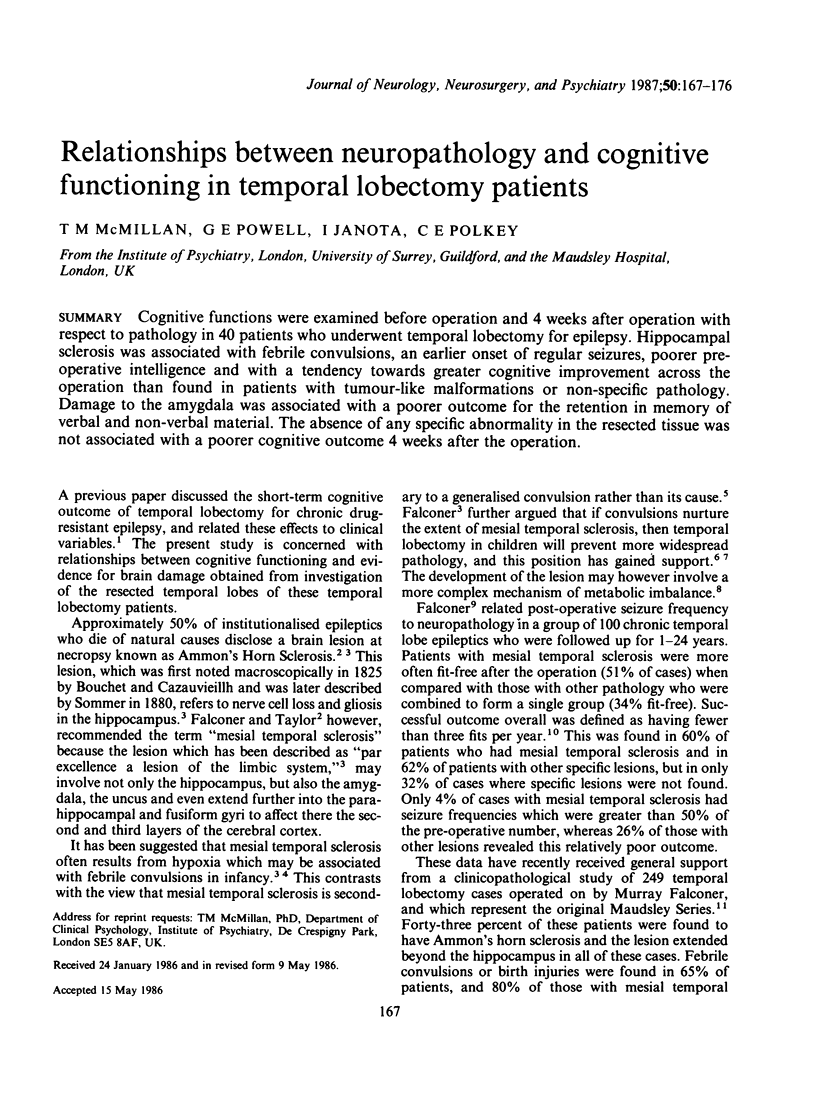
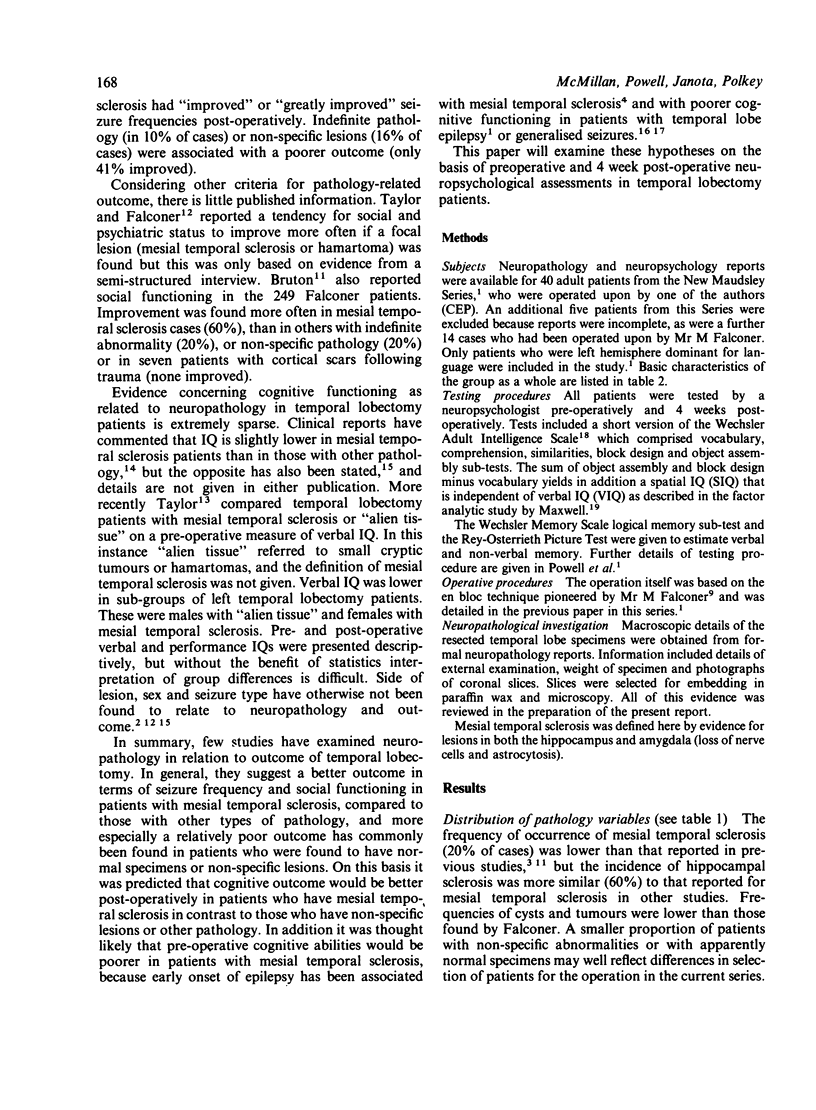
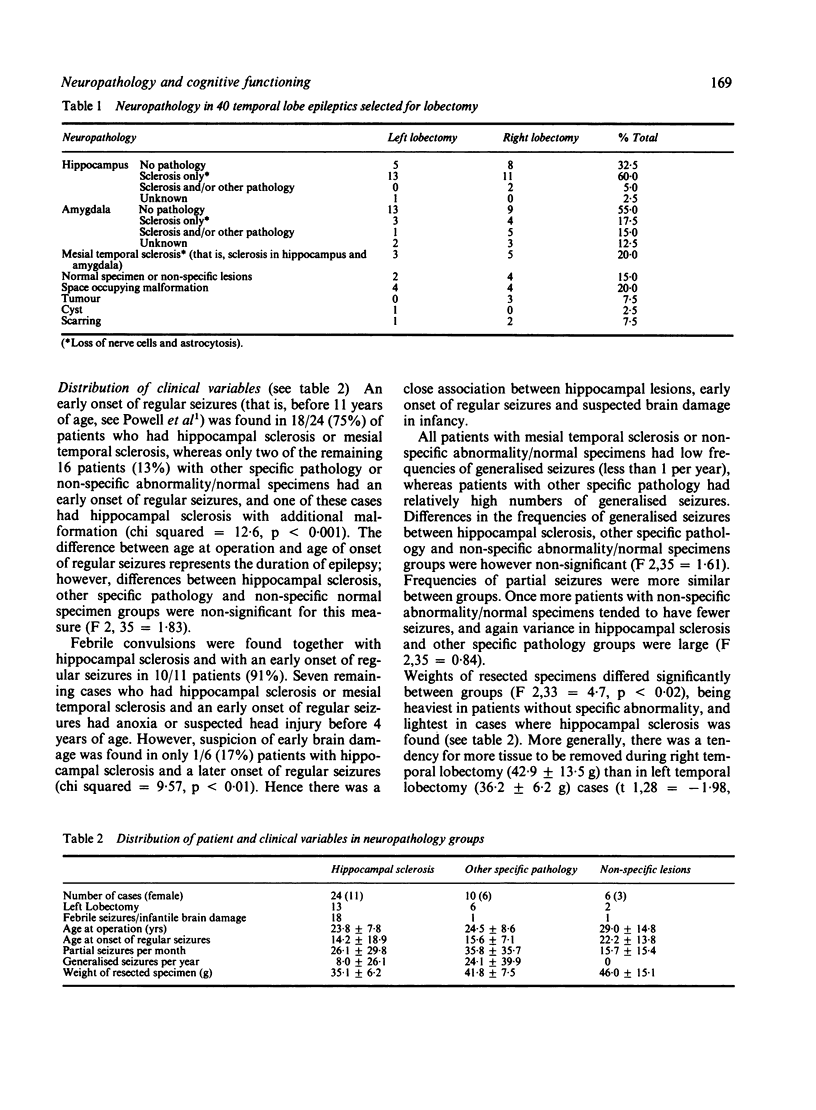
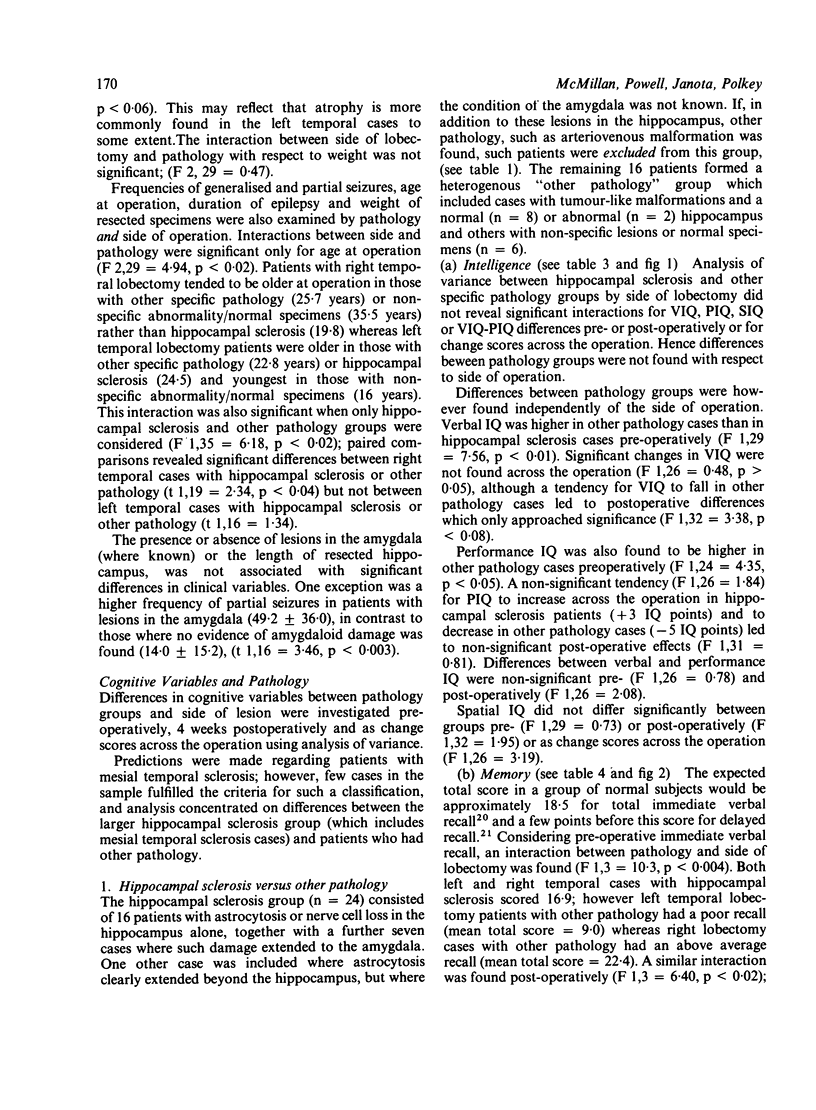
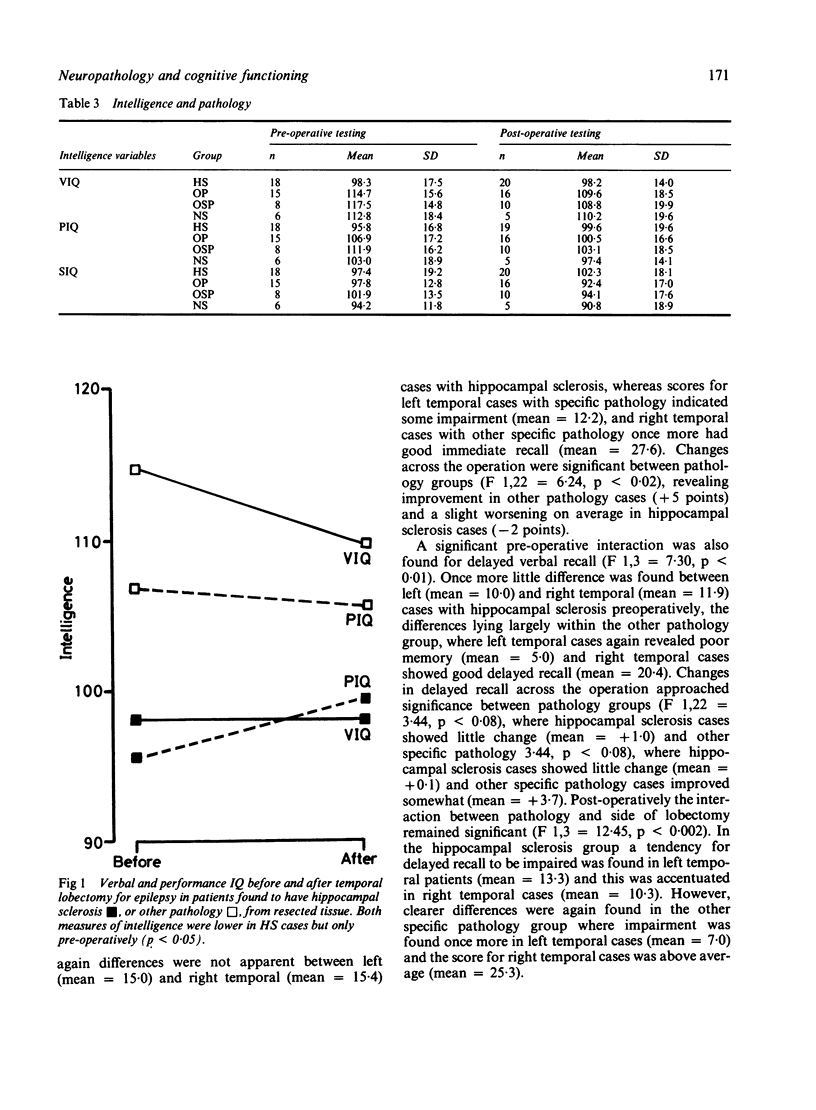
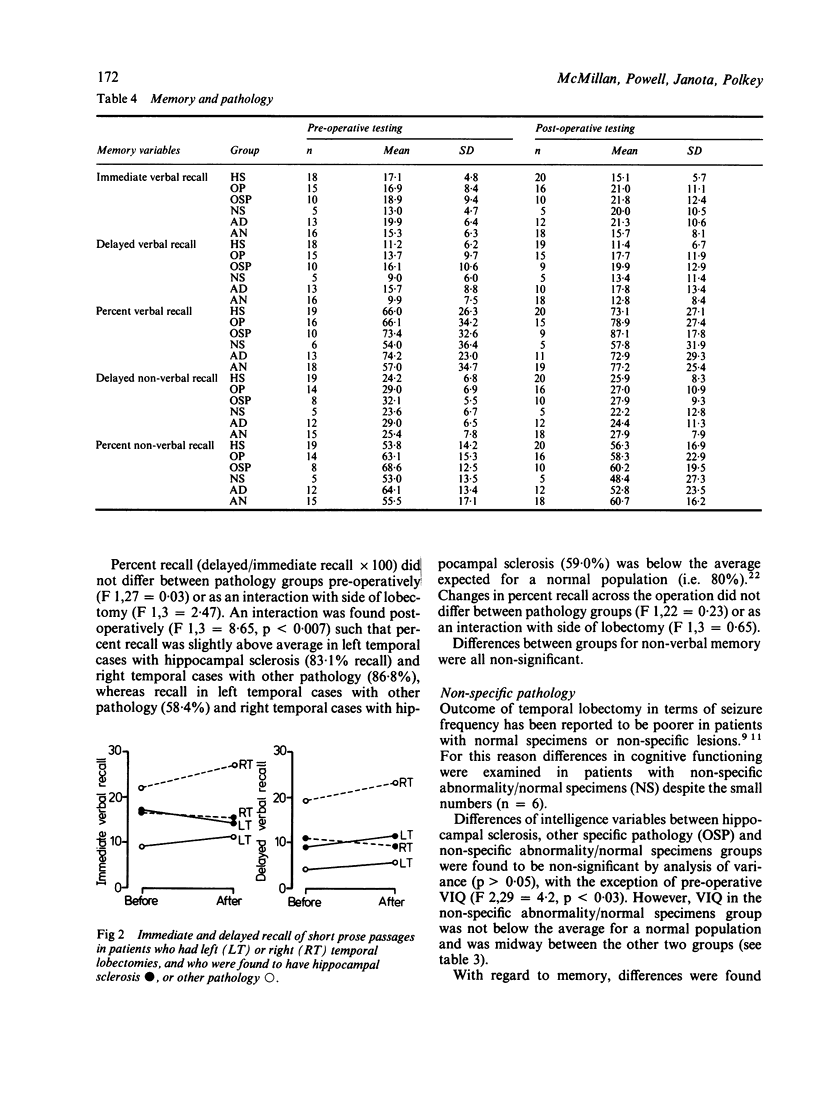
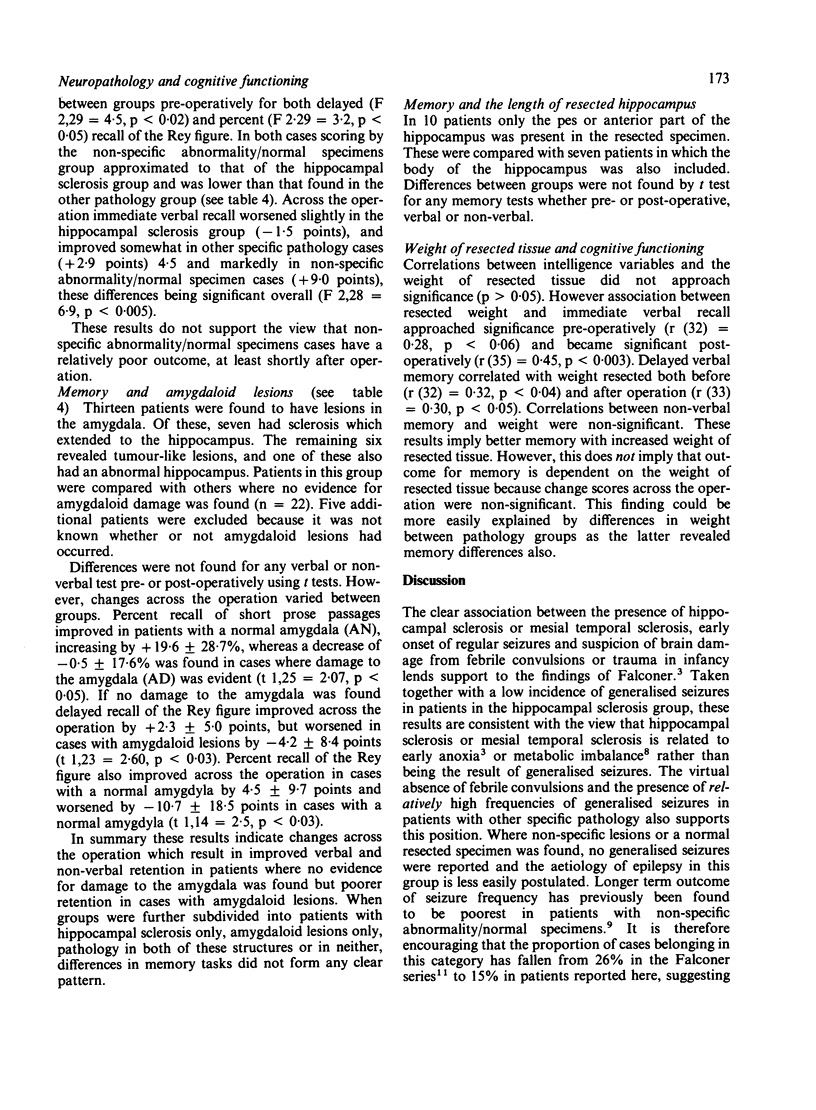
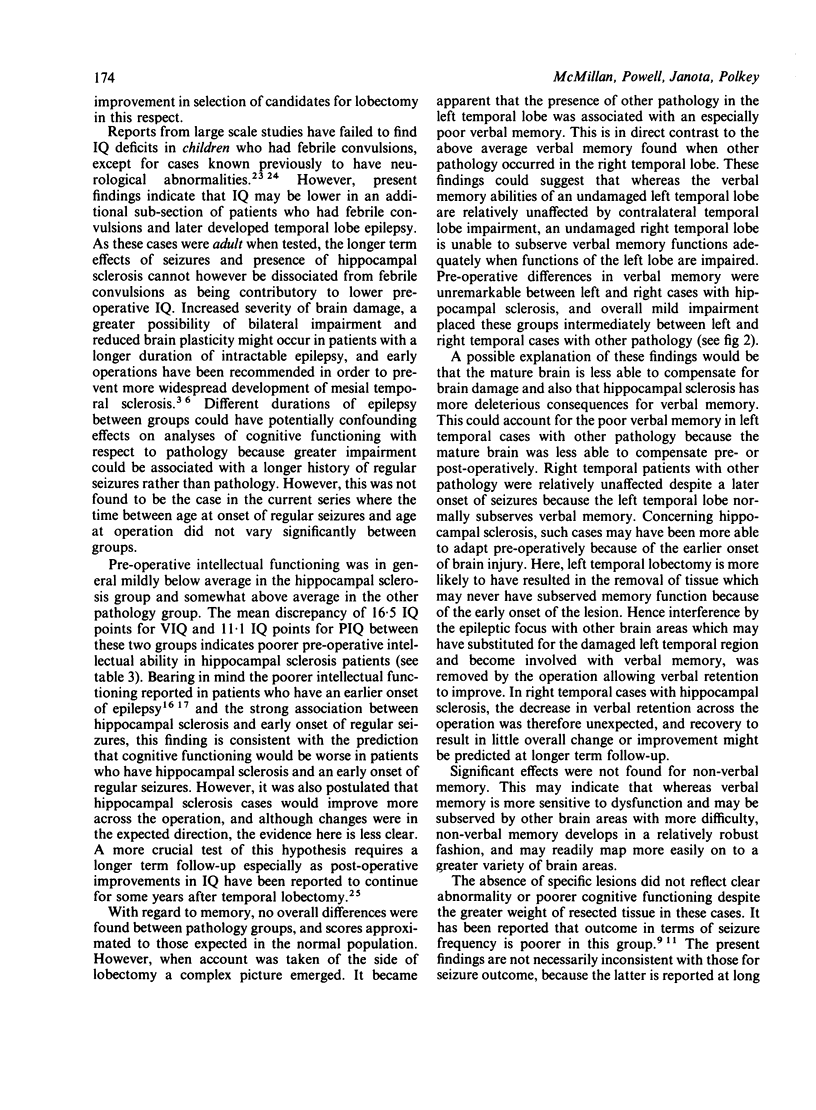
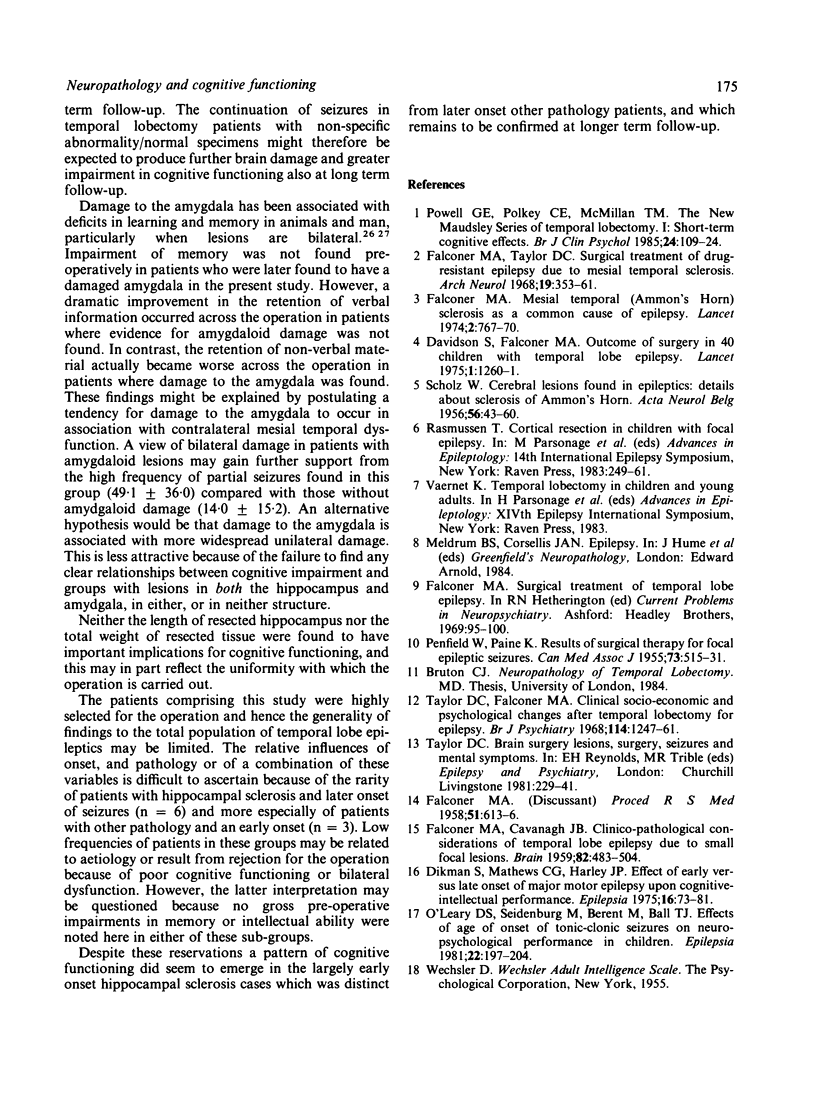
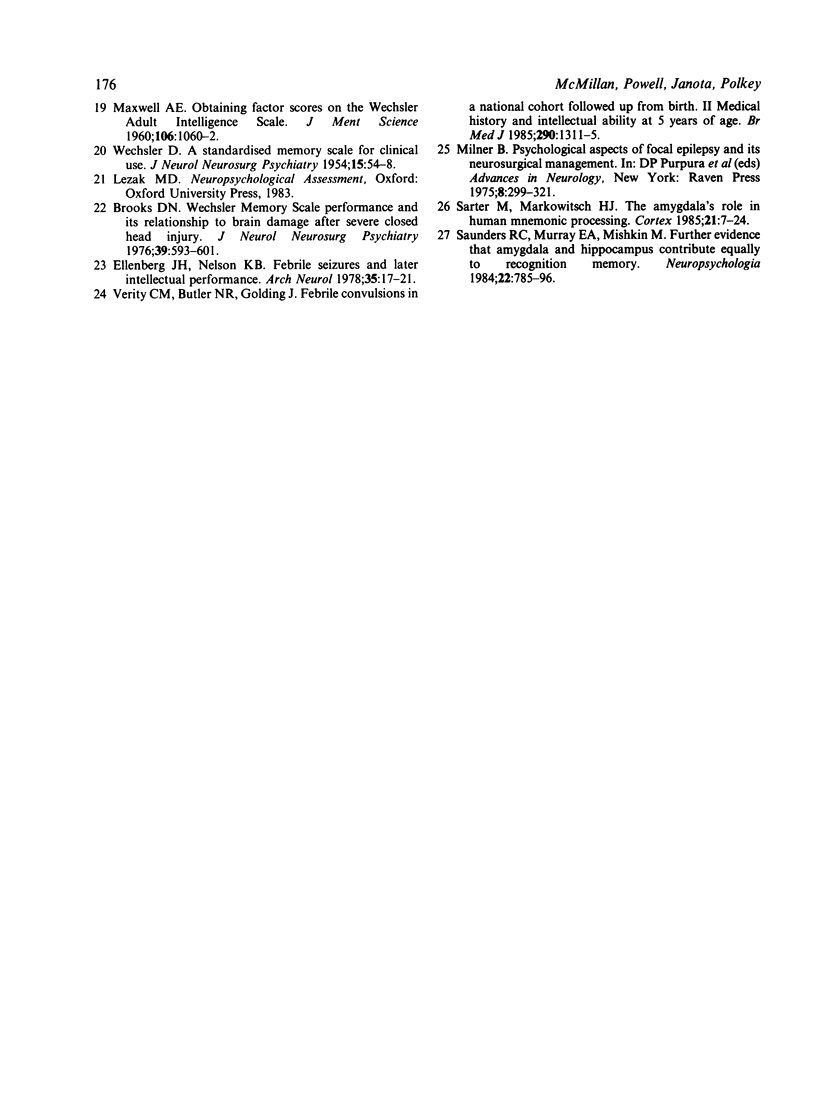
Selected References
These references are in PubMed. This may not be the complete list of references from this article.
- Brooks D. N. Wechsler Memory Scale performance and its relationship to brain damage after severe closed head injury. J Neurol Neurosurg Psychiatry. 1976 Jun;39(6):593–601. doi: 10.1136/jnnp.39.6.593. [DOI] [PMC free article] [PubMed] [Google Scholar]
- Davidson S., Falconer M. A. Outcome of surgery in 40 children with temporal-lobe epilepsy. Lancet. 1975 Jun 7;1(7919):1260–1263. doi: 10.1016/s0140-6736(75)92549-0. [DOI] [PubMed] [Google Scholar]
- Dikmen S., Matthews C. G., Harley J. P. The effect of early versus late onset of major motor epilepsy upon cognitive-intellectual performance. Epilepsia. 1975 Mar;16(1):73–81. doi: 10.1111/j.1528-1157.1975.tb04723.x. [DOI] [PubMed] [Google Scholar]
- Ellenberg J. H., Nelson K. B. Febrile seizures and later intellectual performance. Arch Neurol. 1978 Jan;35(1):17–21. doi: 10.1001/archneur.1978.00500250021004. [DOI] [PubMed] [Google Scholar]
- FALCONER M. A., CAVANAGH J. B. Clinico-pathological considerations of temporal lobe epilepsy due to small focal lesions. A study of cases submitted to operation. Brain. 1959 Dec;82:483–504. doi: 10.1093/brain/82.4.483. [DOI] [PubMed] [Google Scholar]
- FALCONER M. A. Surgery of temporal lobe epilepsy. Proc R Soc Med. 1958 Aug;51(8):613–616. [PubMed] [Google Scholar]
- Falconer M. A. Mesial temporal (Ammon's horn) sclerosis as a common cause of epilepsy. Aetiology, treatment, and prevention. Lancet. 1974 Sep 28;2(7883):767–770. doi: 10.1016/s0140-6736(74)90956-8. [DOI] [PubMed] [Google Scholar]
- Falconer M. A., Taylor D. C. Surgical treatment of drug-resistant epilepsy due to mesial temporal sclerosis. Etiology and significance. Arch Neurol. 1968 Oct;19(4):353–361. doi: 10.1001/archneur.1968.00480040019001. [DOI] [PubMed] [Google Scholar]
- MAXWELL A. E. Obtaining factor scores on the Wechsler Adult Intelligence Scale. J Ment Sci. 1960 Jul;106:1060–1062. doi: 10.1192/bjp.106.444.1060. [DOI] [PubMed] [Google Scholar]
- Milner B. Psychological aspects of focal epilepsy and its neurosurgical management. Adv Neurol. 1975;8:299–321. [PubMed] [Google Scholar]
- O'Leary D. S., Seidenberg M., Berent S., Boll T. J. Effects of age of onset of tonic-clonic seizures on neuropsychological performance in children. Epilepsia. 1981 Apr;22(2):197–204. doi: 10.1111/j.1528-1157.1981.tb04102.x. [DOI] [PubMed] [Google Scholar]
- PENFIELD W., PAINE K. Results of surgical therapy for focal epileptic seizures. Can Med Assoc J. 1955 Oct 1;73(7):515–531. [PMC free article] [PubMed] [Google Scholar]
- Powell G. E., Polkey C. E., McMillan T. The new Maudsley series of temporal lobectomy. I: Short-term cognitive effects. Br J Clin Psychol. 1985 May;24(Pt 2):109–124. doi: 10.1111/j.2044-8260.1985.tb01321.x. [DOI] [PubMed] [Google Scholar]
- SCHOLZ W. Les lésions cérébrales rencontrées chez les épileptiques; précisions sur la sclérose de la corne d'Ammon. Acta Neurol Psychiatr Belg. 1956 Jan;56(1):43–60. [PubMed] [Google Scholar]
- Sarter M., Markowitsch H. J. The amygdala's role in human mnemonic processing. Cortex. 1985 Mar;21(1):7–24. doi: 10.1016/s0010-9452(85)80013-7. [DOI] [PubMed] [Google Scholar]
- Saunders R. C., Murray E. A., Mishkin M. Further evidence that amygdala and hippocampus contribute equally to recognition memory. Neuropsychologia. 1984;22(6):785–796. doi: 10.1016/0028-3932(84)90103-9. [DOI] [PubMed] [Google Scholar]
- Taylor D. C., Falconer M. A. Clinical, socio-economic, and psychological changes after temporal lobectomy for epilepsy. Br J Psychiatry. 1968 Oct;114(515):1247–1261. doi: 10.1192/bjp.114.515.1247. [DOI] [PubMed] [Google Scholar]
- Verity C. M., Butler N. R., Golding J. Febrile convulsions in a national cohort followed up from birth. II--Medical history and intellectual ability at 5 years of age. Br Med J (Clin Res Ed) 1985 May 4;290(6478):1311–1315. doi: 10.1136/bmj.290.6478.1311. [DOI] [PMC free article] [PubMed] [Google Scholar]


